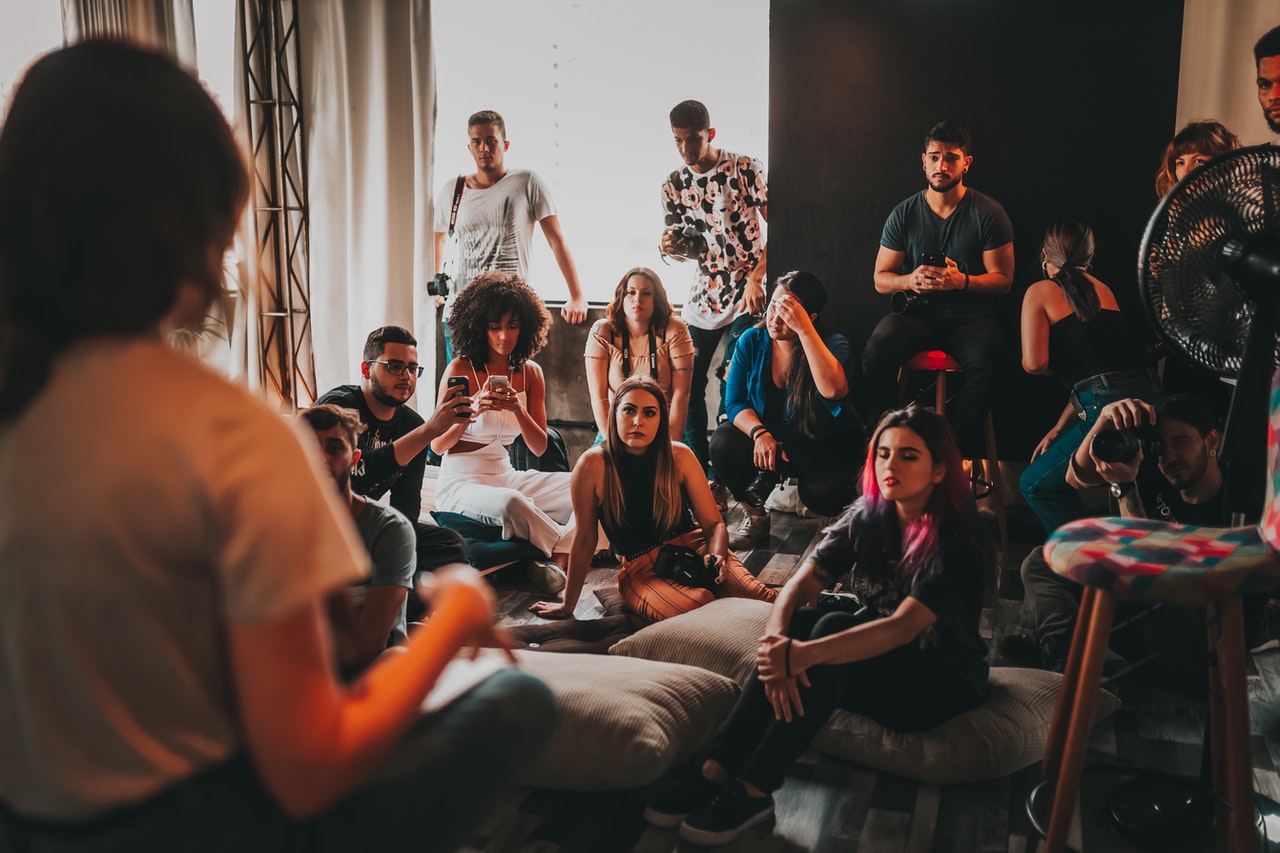Good morning, class. Today we're going to talk about storytelling and the role it plays it B2B marketing.
Ian Bruce, principal analyst at Forrester, recently wrote about storytelling for B2B marketers. In his post, Ian cited a stat from psychologist Jerome Bruner, writing that "facts embedded in a story are 22 times more memorable than those same facts told in isolation."
The most successful marketers tell compelling stories to draw their audience in. I'd also argue the same is true of anyone customer-facing. If you can tell compelling stories, you'll connect better with your customers, build stronger relationships, and eventually sell more, provide higher levels of customer satisfaction, and the like.
We know good stories form the foundation of a strong sales and marketing strategy. But how do we tell good stories?
Ian's Jerome Bruner reference got me thinking more about the scholarly foundations of storytelling, and how we can use what academics have been studying for millennia to help us - regular everyday marketers - use stories for our everyday B2B sales and marketing. (Sorry not sorry, Aristotle.)
I studied narrative as part of my doctorate work in graduate school, learning about the ways we construct and consume stories. What goes into a good story? What's the role of storytelling in organizations? And then, of course, how can we use stories in sales and marketing? A lot of what I'm going to talk about below comes from Jerome Bruner's The Narrative Construction of Reality, among other sources, which I'll cite as I go along.
So, what goes into a good story?
Verisimilitude
This is one of my all-time favorite words and the first piece of a good story: verisimilitude. Verisimilitude is believability. As Bruner writes, “narrative ‘truth’ is judged by its verisimilitude rather than its verifiability.” Basically, does something feel true? Does it resonate? It doesn't matter if it's actually factually true (what we call a "capital-T Truth"), just that it feels like it could be true ("little-t truth").
You may already know about "truthiness" - another term for a similar concept. Stephen Colbert popularized the word "truthiness" back in 2005 (side note: hard to watch that video and not be impressed with Colbert's prescience, right?) Little-t truth is relative. Capital-T Truth is not.
Verisimilitude is also similar to the rhetorical concept of mimesis - imitation or possessing relatable knowledge. Plato wrote a lot about mimesis and its use in storytelling. I'll note that Plato didn't always consider mimesis a good thing; he saw it as impersonation, and definitely not capital-T Truth. But storytelling needs mimesis to resonate with its audience, and mimesis doesn't have to be dirty (or "deviant" in Platospeak). Stories need to feel true, but they also need to be interesting.
Interest
So what makes a story interesting? Let's look at another Bruner quote: “For to be worth telling, a tale must be about how an implicit canonical script has been breached, violated, or deviated from...”
The canonical script is what we know already - common knowledge, shared history. We usually don't need to articulate our canonical scripts; we just know them. A good example of a canonical script in B2B companies is the marketing website. Every single B2B website looks the same. They follow the same script - home page, product page, resources, demo request, chatbot. Even the words on these websites are essentially the same. It's how we speak to each other, how we know we're of the same tribe.
To generate interest to our audience, we need to break from those scripts. There needs to be a breach, violation or deviation - something to surprise the reader.
This is a delicate balance, violating scripts without upsetting your reader. You need something that interrupts the status quo, but doesn't blow it totally up. This is a unique point of view, a different angle, a new fact. Something the audience hasn't seen before.
To do this, you need to know the script well. This requires domain expertise and deep understanding of your market and competitors. Read everything you can. Join online communities, connect with influencers on LinkedIn, subscribe to relevant newsletters. And don't stop reading - even if you're an industry veteran, there are voices out there you haven't heard yet. Learn from them, and then disrupt them.
Relatability
The best stories are relatable. They feel like they could happen to the reader, or they remind the reader of something they've experienced before. Your audience should be able to relate to your story.
So how do you tell relatable stories? How can you ensure the things you're talking about will resonate with your audience? Start by better understanding your audience. Collect stories from your customers. Learn what they talk about.
I cannot stress this enough - customer development is extremely important. Talk to your customers all the time. Make sure everyone in your company talks to customers. And when you talk to customers, give them room to speak. Ask questions to elicit stories with prompts like:
- "Tell me about a time that..."
- "Can you remember when....?"
- "Could you share a story about...?"
You can also share your own stories to get reactions. When you tell a story, it'll trigger someone else to think of a story of their own.
Relatability connects back to the concept of mimesis above - the more you know about your audience's stories, the better equipped you will be to share stories like them.
Presentation
Finally, how do you tell your story? Where do you tell it, how do people engage with it?
You probably know a good storyteller. The person at the party who always has an anecdote, who seems to be able to make anyone laugh, or who can draw in a crowd. And no matter what the story is about, there's something compelling about their delivery. The best storytellers have a good story with a great delivery.
No matter how good your story is, you need to tell it well. Think about delivery, audience, amplification, channels. You need to tell stories where your desired audience will be, in a format they can consume, in language they understand.
For example, if your audience is on LinkedIn, you may choose to tell your story in pithy broetry. Or you may film a short video with audio captions. You may tell your story in longer forms, like a blog post or email newsletter. Maybe you have a podcast or webinar series, where you highlight stories your customers can tell about themselves. Or you look for conference keynotes or small local meetups. Your imagery, brand colors, website and social media accounts should do their part to tell better stories too.
In Plato's day, you didn't have a lot of choice about how you told stories - you basically had to orate your story for a live audience in an outdoor amphitheater. Now, we can tell stories in a billion ways to anyone around the world. (I'm exaggerating a little for dramatic effect, but you get the idea.) We can be extraordinarily creative about how we tell stories. You just have to figure out who you're talking to, where they are, and how they want to listen.
How do you use storytelling for your B2B sales and marketing? I'd love to hear your stories. Find me on Twitter or LinkedIn. And if you're interested in narrative, I'd love to nerd out about these things with you. Let's talk!




